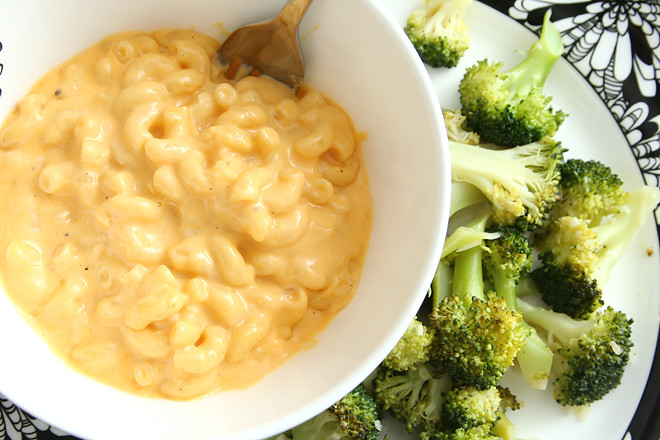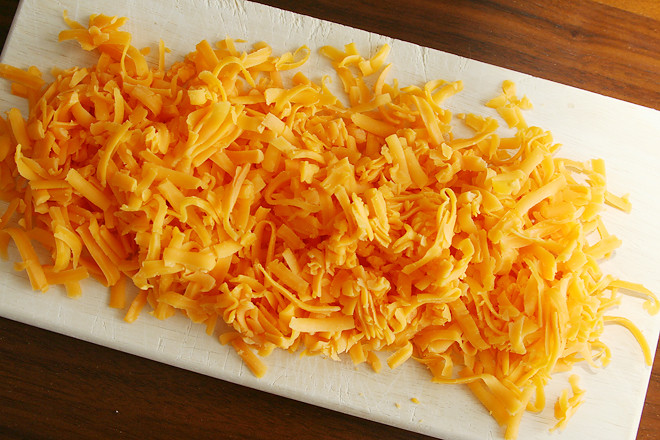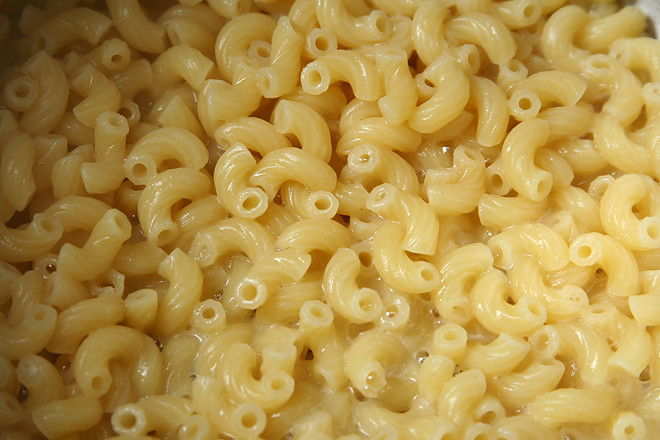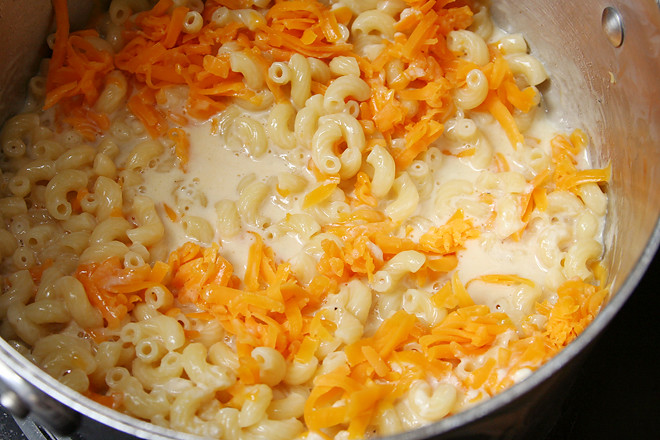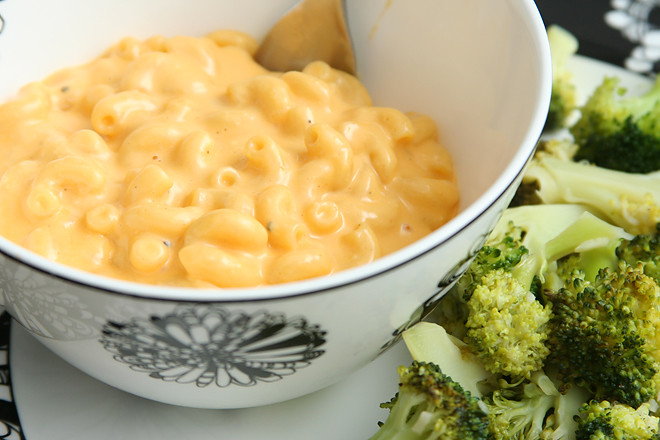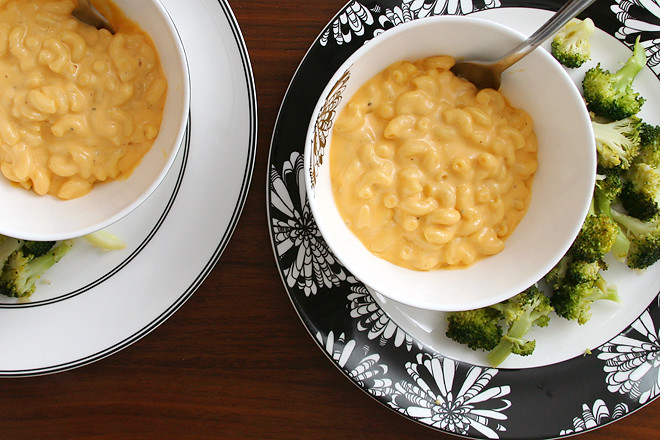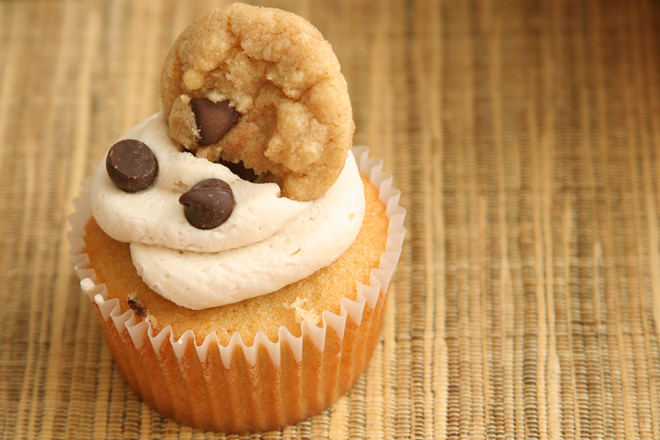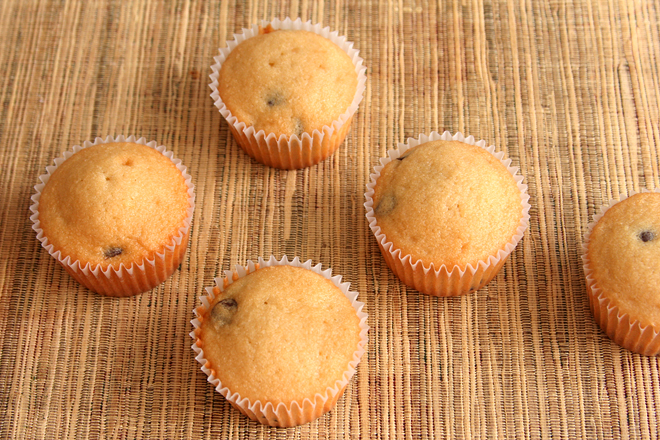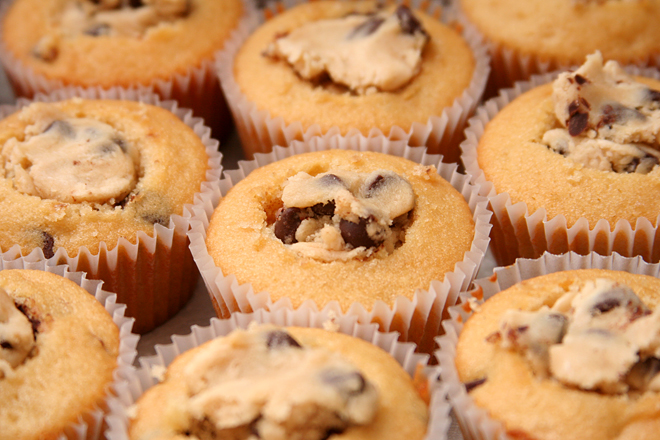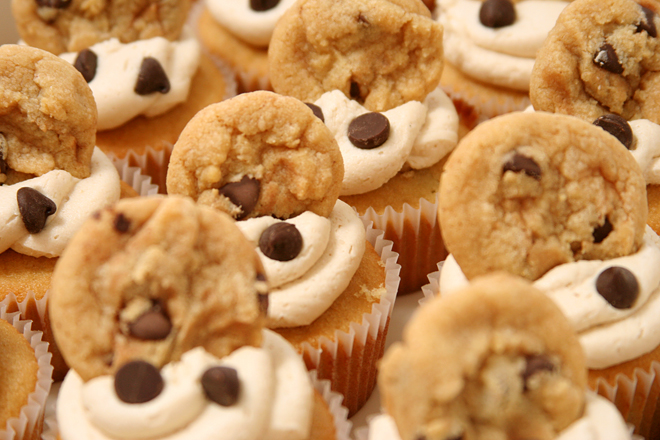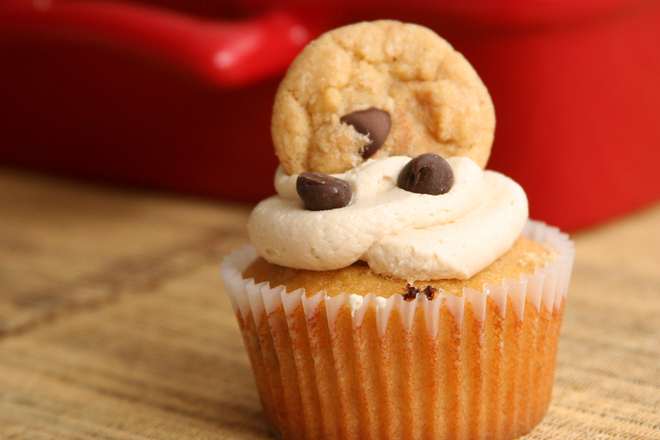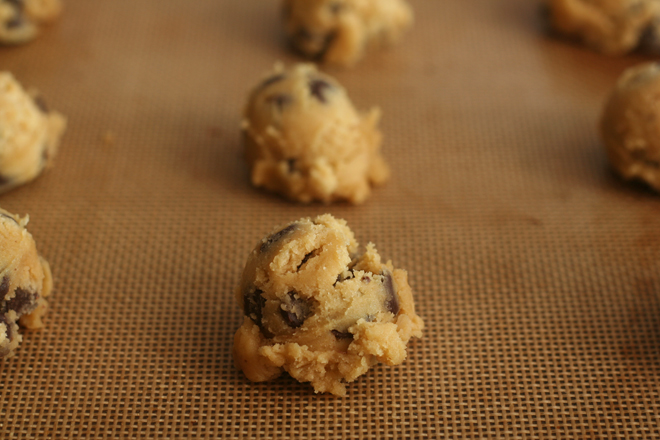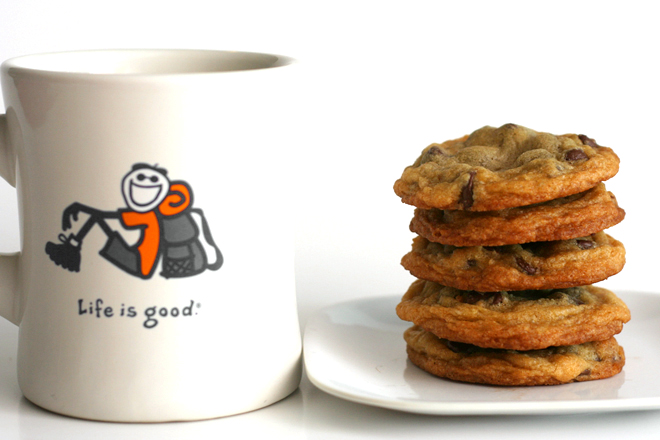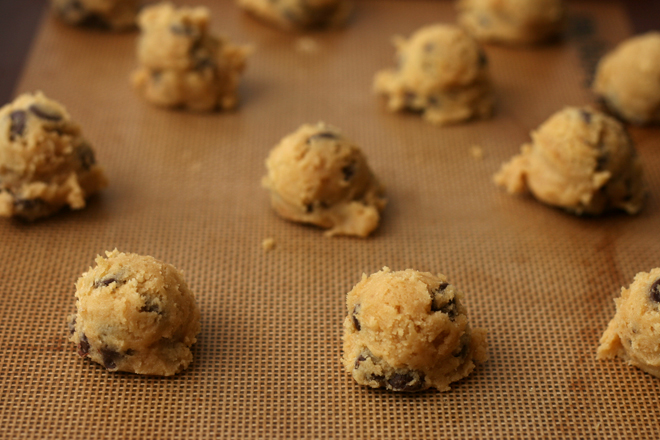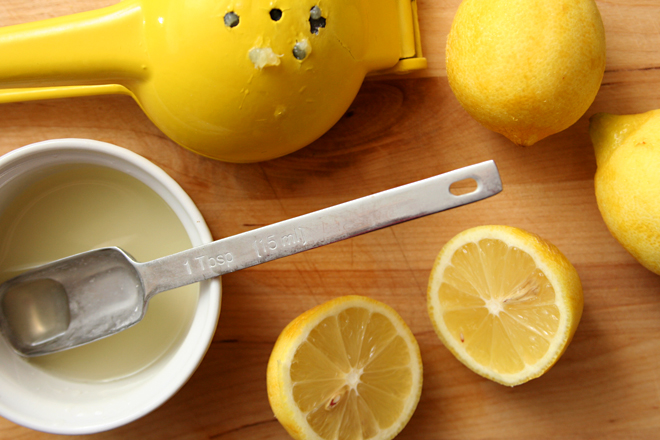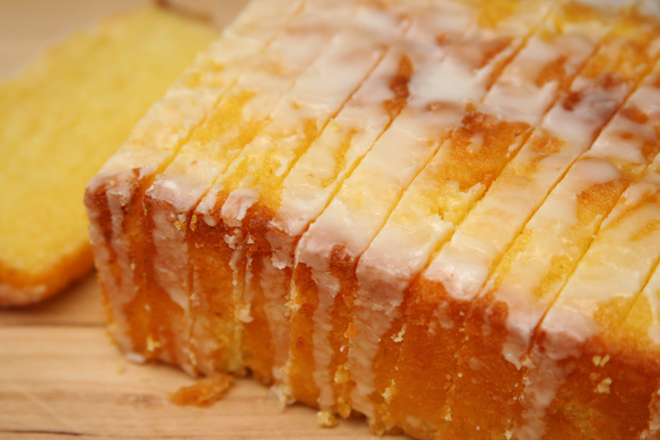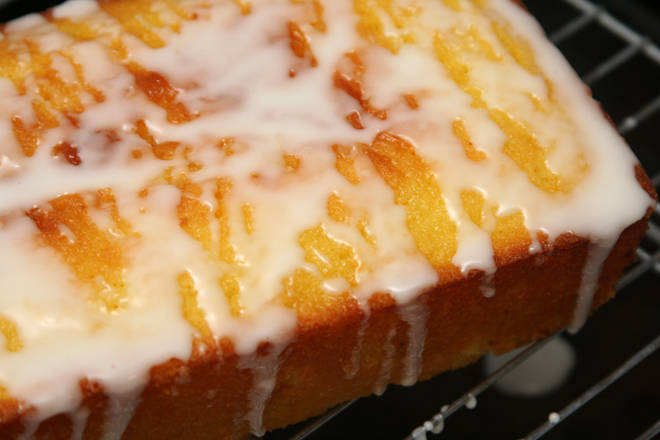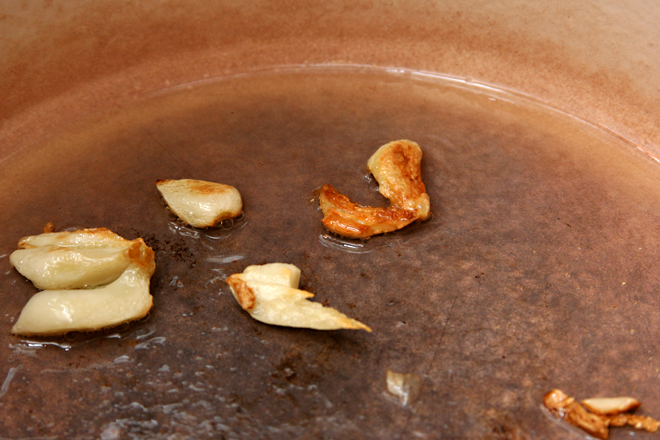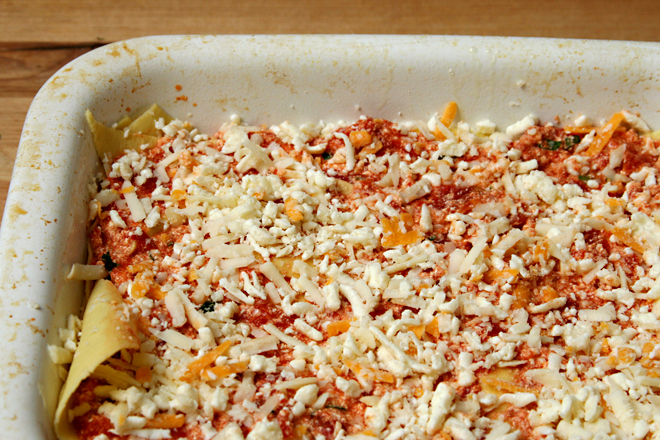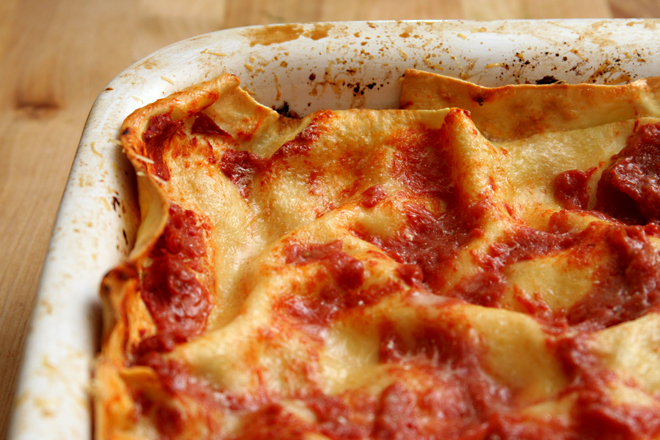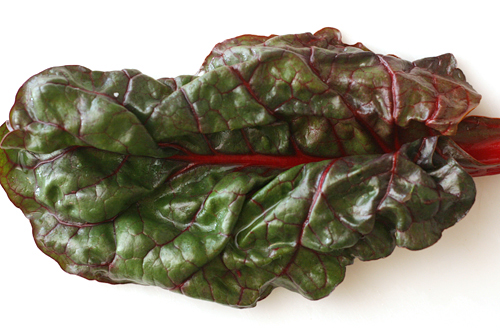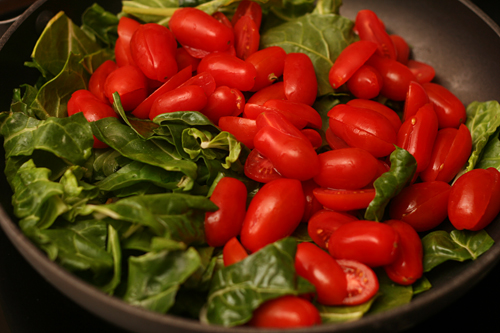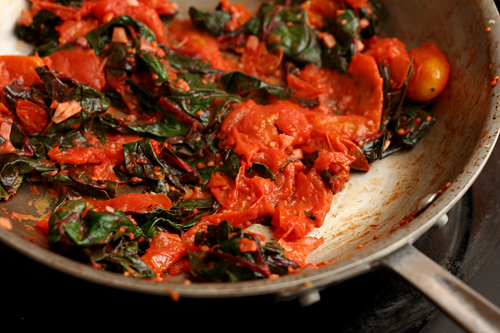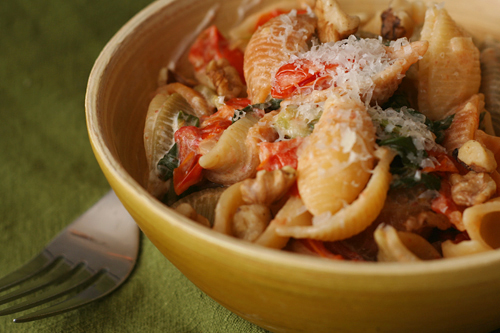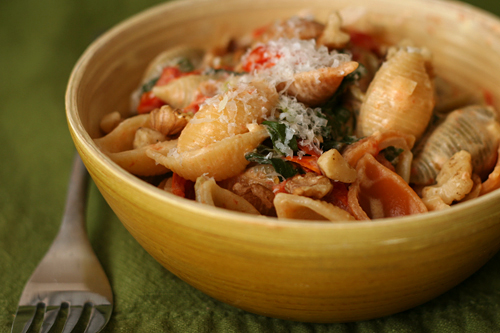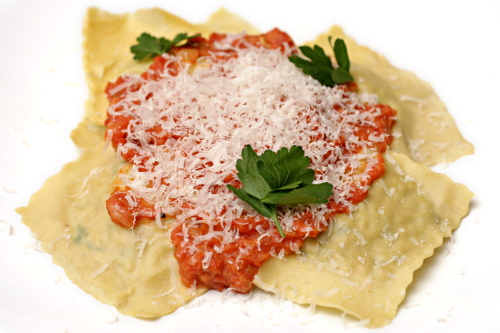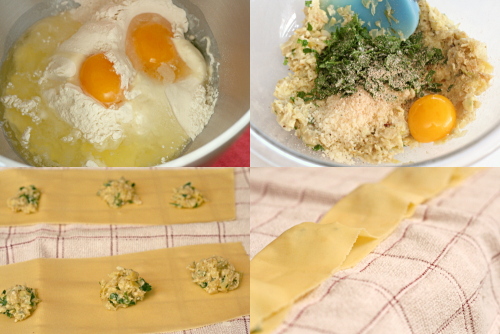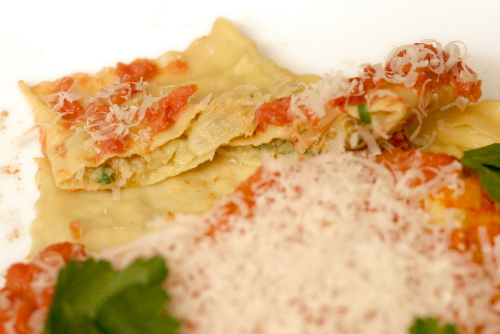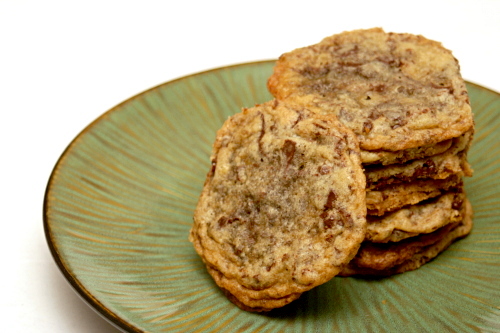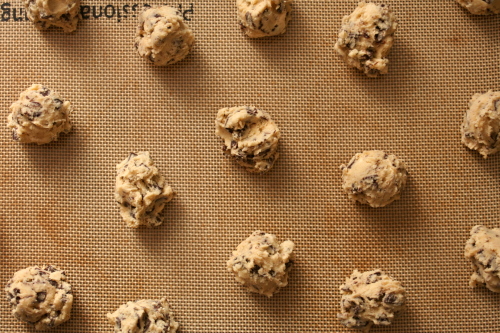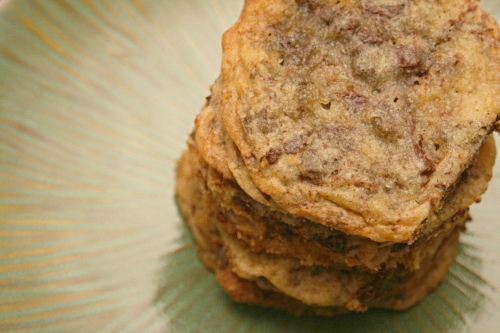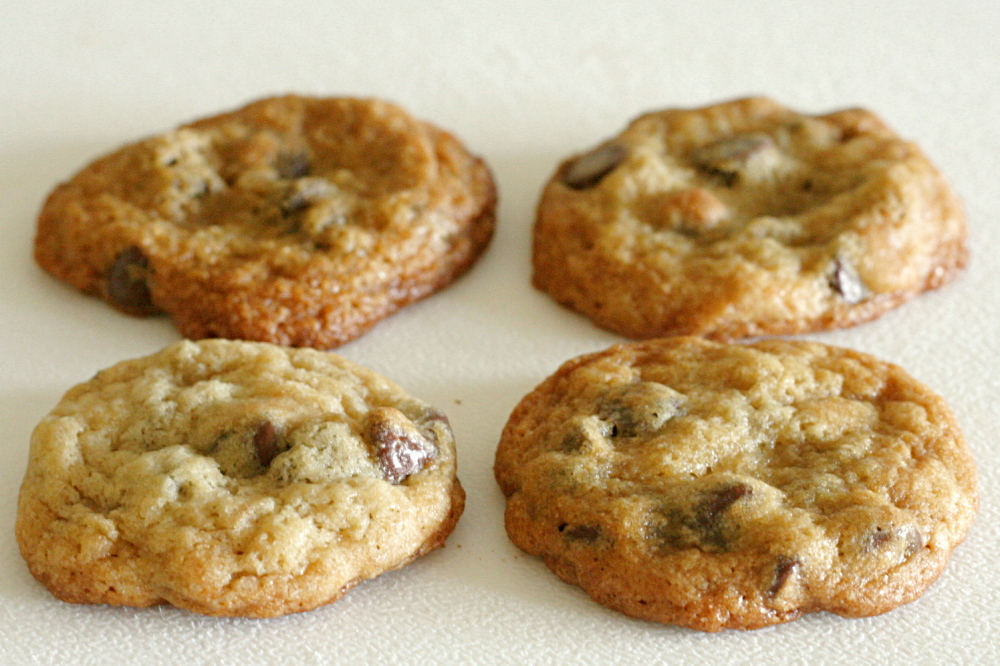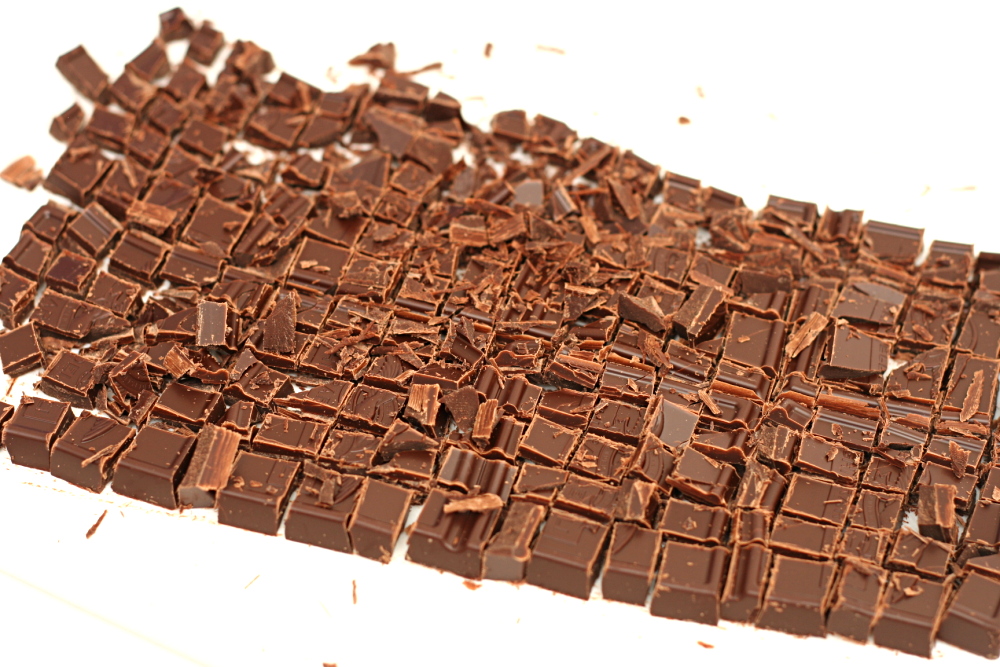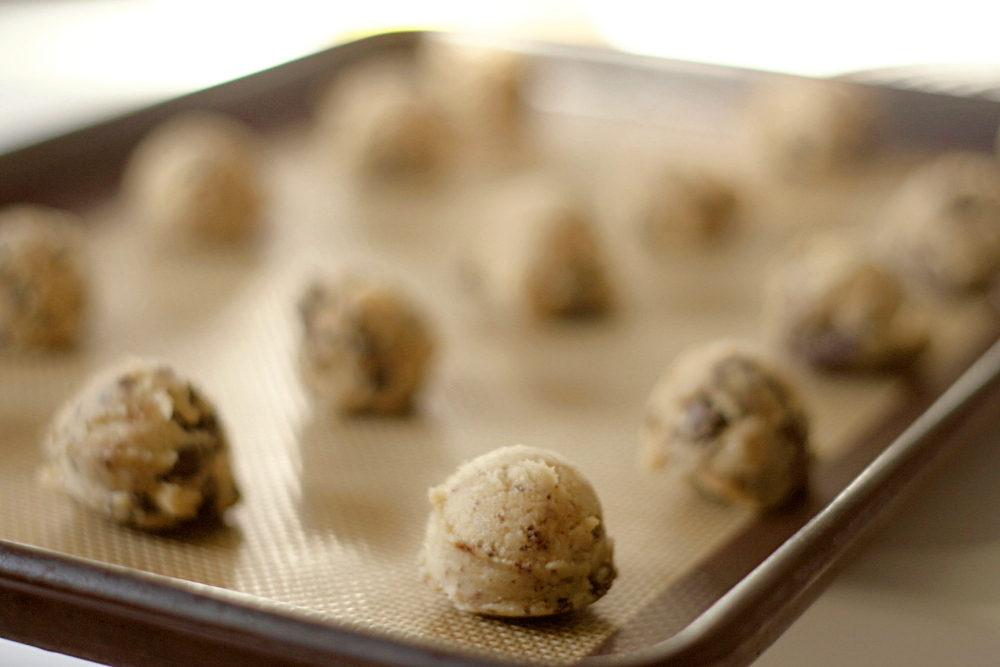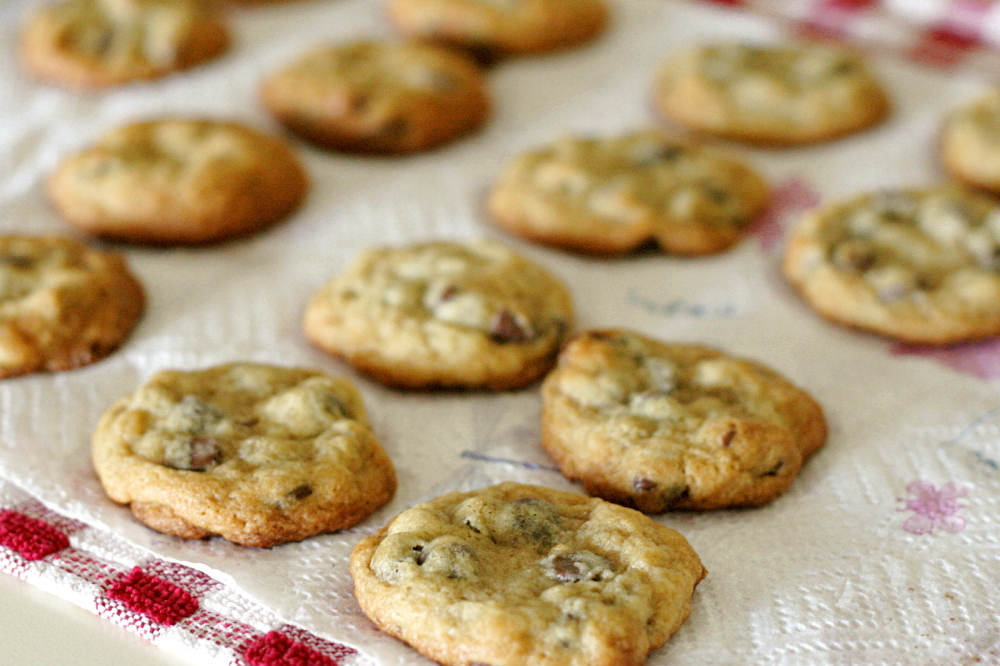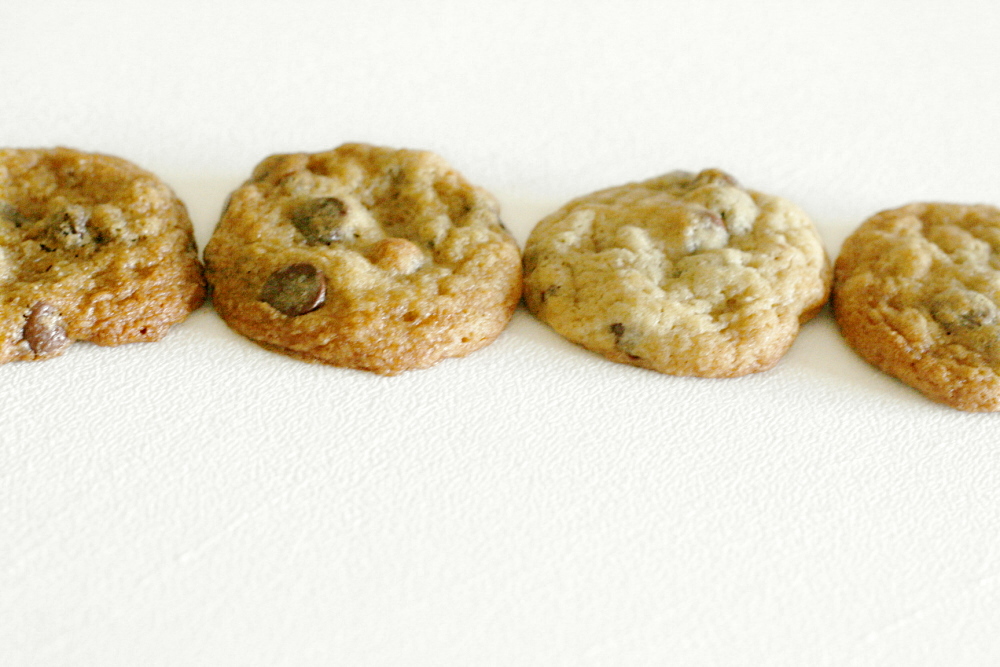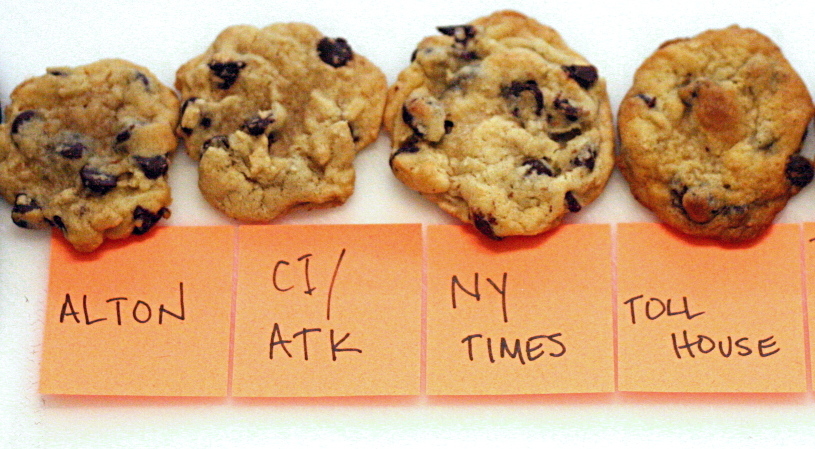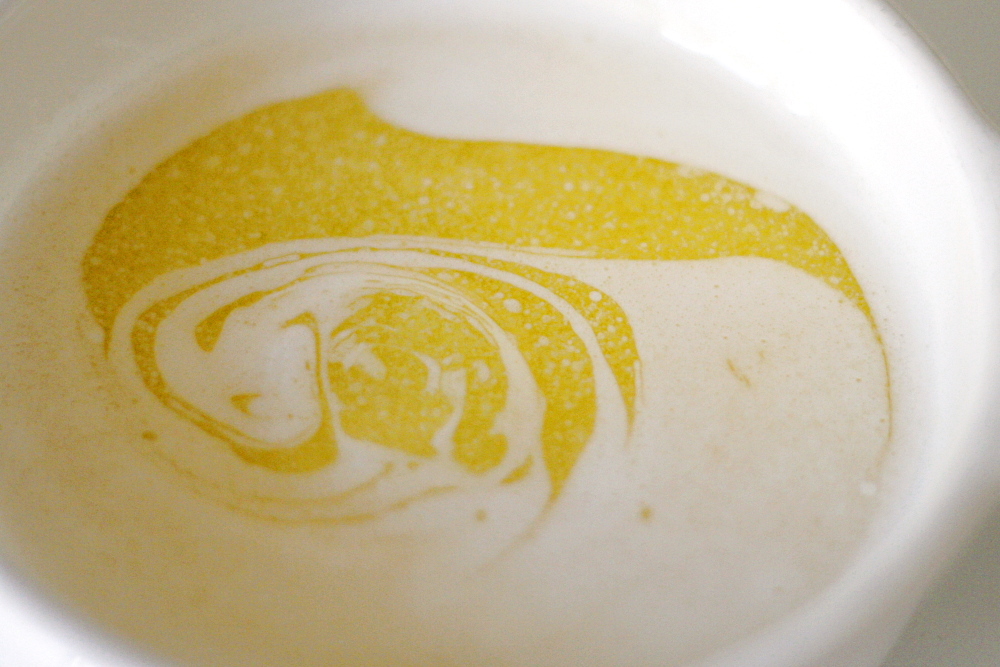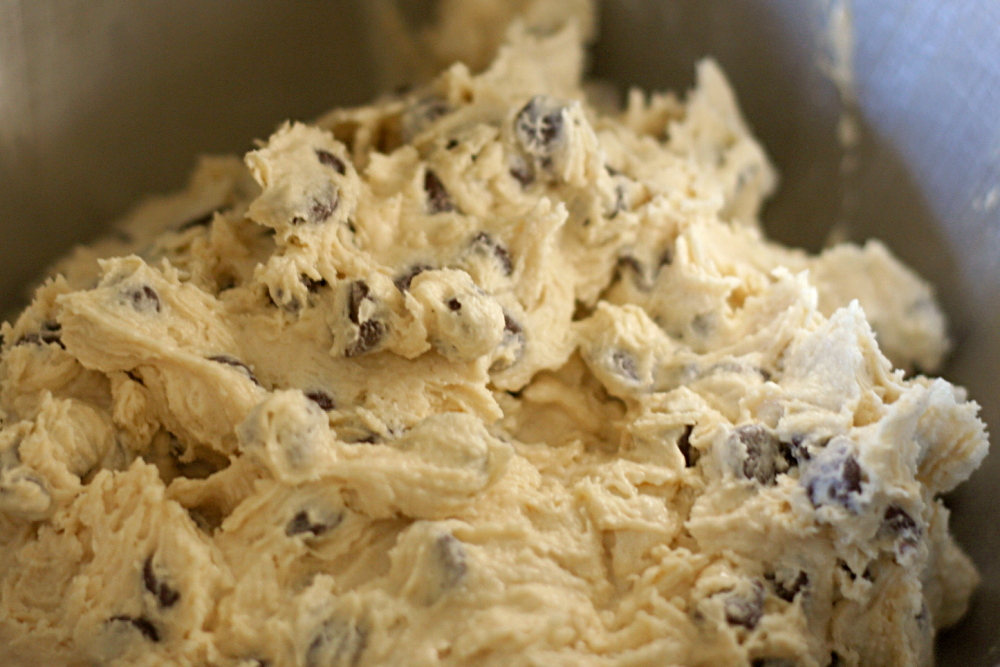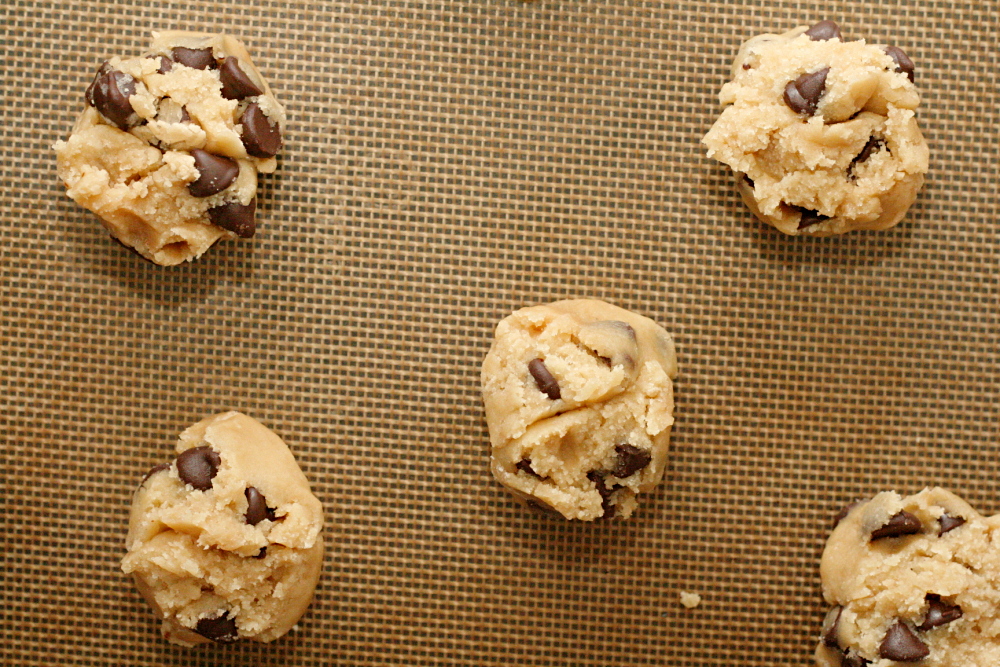There are three things that lead to difficulties with self-control for me – chocolate chip cookie dough, macaroni and cheese, and alcohol. I’ve found a handful of tricks for dealing with the alcohol one (although tiki drinks can be tricky since even one can be strong enough to lower my resistance to more!), but with the other two, the best way I’ve found of controlling them is not to be around them. We normally eat macaroni and cheese maybe once a year, even though it’s one of my favorite foods.
I’ve told myself for years that when I got pregnant and couldn’t drink alcohol or eat cookie dough, I’d make up the extra calories with macaroni and cheese. It turns out that making up extra calories hasn’t been an issue; since I got that positive test back in May, all I’ve wanted to eat is dessert. Pasta is tasting extra delicious too, and yes, especially when it’s coated in cheese.
I love the baked recipe I’ve been making for years, but then someone mentioned the blue box mac and cheese, and while I haven’t had severe cravings, maybe I’m more suggestible than I would normally be. I couldn’t stop thinking about that blue box. Unfortunately, the last time I bought it, I distinctly remember being disappointed that it was bland and mushy.
I figured there had to be a way to make a creamy, smooth sauce using real ingredients. It turns out, the most popular recipes for stovetop mac and cheese aren’t so different from the blue box; you still coat the cooked pasta with butter, then add milk and cheese – except in this case, that cheese is real shredded cheddar, not a powder. And it tastes reminiscent of that blue box, in the best possible way. Plus, the pasta doesn’t dissolve in my mouth before I get to chew it! This is so good and so easy that maybe one day, my daughter will be nostalgic for this recipe instead of that blue box.
Printer Friendly Recipe
Stovetop Macaroni and Cheese (not really adapted from Cook’s Illustrated)
I’ve only made this with all cheddar cheese. Monterey jack could make the sauce smoother, but it won’t be as flavorful. I tried a different recipe that called for a combination of cheddar and American cheese, and, while the sauce was creamier, the flavor of the American cheese dominated, and I prefer cheddar. With just cheddar, the sauce is plenty smooth and creamy for me.
So far, I’ve only made a half recipe (multiple times), using a 5-ounce can of evaporated milk. It seems like plenty of liquid.
2 large eggs
1 (12-ounce) can evaporated milk
¼ teaspoon hot pepper sauce
2 teaspoons table salt
¼ teaspoon ground black pepper
1 teaspoon dry mustard, dissolved in 1 teaspoon water
8 ounces elbow macaroni
4 tablespoons unsalted butter
12 ounces sharp cheddar cheese, American cheese, or Monterey Jack cheese, grated (about 3 cups)
1. Meanwhile, heat 2 quarts water to boil in large heavy-bottomed saucepan or Dutch oven. Add 1 1/2 teaspoons of the salt and macaroni; cook until almost tender, but still a little firm to the bite. Drain and return to pan over low heat. Add butter; toss to melt.
2. Meanwhile, mix eggs, 1 cup of the evaporated milk, pepper sauce, 1/2 teaspoon of the salt, pepper, and mustard mixture in small bowl; set aside.
3. Pour egg mixture over buttered noodles along with three-quarters of the cheese; stir until thoroughly combined and cheese starts to melt. Gradually add remaining milk and cheese, stirring constantly, until mixture is hot and creamy, about 5 minutes. Serve immediately.
